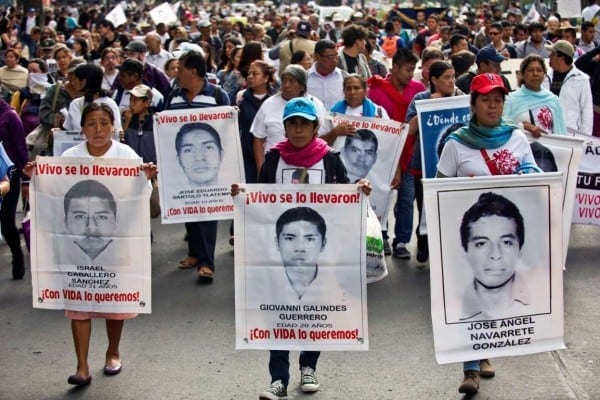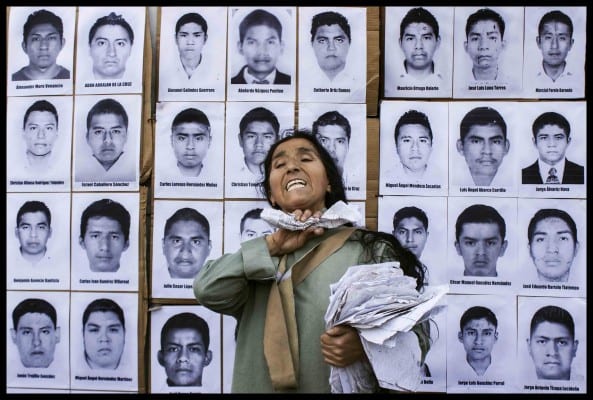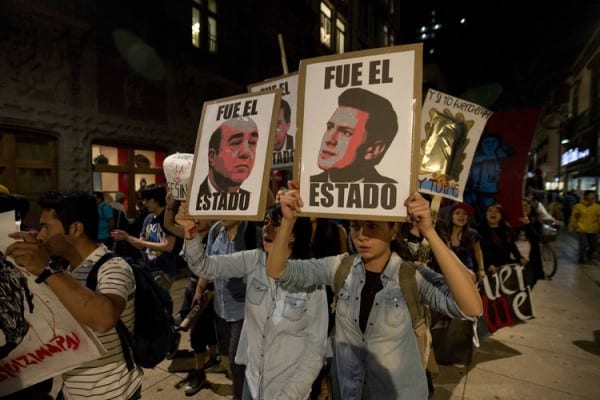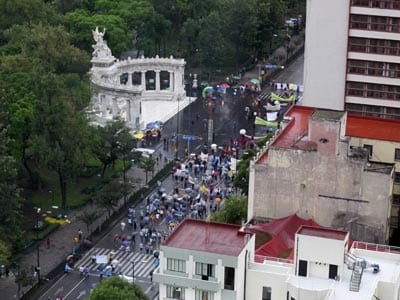Protest in Mexico*
[S]an Bernardino Chalchihuapan, Mexico – People in this town in the central Mexican state of Puebla found out the hard way that protesting can be deadly.
A new law passed in Puebla makes it possible for police to use firearms or deadly force to break up demonstrations.
Local inhabitants felt the impact of the measure during a harsh crackdown on a protest against another law that they say undermines their autonomy.
A dead 13-year-old boy, another who lost three fingers, a third with a broken jaw and teeth knocked out, a driver who lost an eye, and 37 others injured by beatings and tear gas were the price this Nahua indigenous town of 3,900 people paid for blocking a road to demand the repeal of a state law that transferred responsibility over civil registries from local community authorities to the municipalities.
“It’s not fair that they attack the people like this just because we are asking that our community life, our authorities, be respected,” Vianey Varela, a first year high school student, told IPS.
On Jul. 9, when local residents blocked the Puebla-Atlixco highway some 150 km from Mexico City, the state police first used the powers given to them by the Law to Protect Human Rights and Regulate the Legitimate Use of Force by the police, which the state legislature passed in May.
The “Ley Bala” or Bullet Law, as it was dubbed by journalists, allows Puebla state police to use firearms as well as “non-lethal weapons” to break up “violent” protests and during emergencies and natural disasters.
The roadblock was mounted to protest another state law approved in May, which took away from the local authorities the function of civil registry judges or clerks and put it in the hands of the municipal governments.
As a result, since May, in at least 190 villages and towns in the state, no one has been born, no one has died, and no one has been married – at least officially, because there are no records.
Javier Montes told IPS that he became “presidente auxiliar”- a post just under mayor – of San Bernardino Chalchihuapan in May, but added that “I still haven’t signed a thing. The archives are in our care, but we don’t have stamps or the necessary papers. And in the municipal presidency [mayor’s office] they don’t know what to do, so in the meantime nothing is being registered.”
“We sent letters to all the authorities,” said Montes, who has received anonymous threats for speaking out. “They never responded. When the ink and paper ran out, and our fingers were worn out from so much typing, we went out to protest and this is what happened.”
The town is in the municipality of Ocoyucan and the local inhabitants belong to the Nahua indigenous community. According to the latest estimates by the government’sNational Commission for the Development of Indigenous Peoples, the native population of Puebla is one million people – one quarter of the state’s total population.
In Mexico’s municipalities there is a “presidente” or mayor, and “presidentes auxiliares”, who are the highest level authorities in the communities, many of which are remote and located far from the seat of the municipal government.
The presidentes auxiliares name the police chief and run the town. And up to May they were also the civil registry judges or clerks..
They are directly elected by local voters without participation by the political parties, and they tend to be highly respected local leaders who are close to the people.
In the Jul. 9 police crackdown, 13-year-old José Luis Alberto Tehuatlie was hit by a rubber bullet in the head and died after 10 days in coma.
The Puebla state government initially denied that rubber bullets had been used. But the public outrage over the boy’s death forced Governor Rafael Moreno to announce that he would repeal the law.
Puebla is not the only place in Mexico where there have been attempts to regulate public protests. In the last year, the legislatures of five states have discussed similar bills.
The first was, paradoxically, the Federal District, in Mexico City, which has been governed by the leftwing Party of the Democratic Revolution (PRD) since 1997.
In the capital street protests are a daily occurrence, but since the very day that Enrique Peña Nieto was sworn in as president, on Dec. 1, 2012, demonstrations and marches have frequently turned violent.
A Federal District bill on public demonstrations, introduced in December 2013 by lawmakers from the rightwing opposition National Action Party, failed to prosper.
In April, the southeastern state of Quintana Roo, ruled by the governing Institutional Revolutionary Party (PRI), became the first part of Mexico to regulate protests.
A state law, the “Ley de Ordenamiento Cívico“, known as the “anti-protest law,” is a toned-down version of another initiative that would have required demonstrators to apply for a permit to protest at least 48 hours ahead of time.
But the law maintains the ban on roadblocks and allows the police “to take pertinent measures” against demonstrators.
Other initiatives to regulate and allow the “legitimate use of force” have been adopted in the states of San Luis Potosí and Chiapas.
Global rights groups like Article 19 and Amnesty International have spoken out strongly against these laws aimed at regulating demonstrations, pointing to a worrisome tendency towards the criminalisation of social protests in Mexico since 2012.
But the governmental National Human Rights Commission has failed to make use of its legal powers to promote legal action challenging the anti-protest initiatives as unconstitutional.
On the contrary, in October 2013 it recommended that the Senate amend article 9 of the constitution referring to the freedom to hold public demonstrations and to the use of public force.
The Jul. 9 protest was not the first time rubber bullets have been used in Puebla.
Just hours before Tehuatlie’s death was confirmed, the Puebla state secretary of public security, Facundo Rosas, showed a document from the secretariat of national defence which indicated that the government had not purchased rubber bullets under the current administration.
However, in December 2011 the state human rights commission rebuked the Puebla police chief for the use of rubber bullets to evict local residents of the community of Ciénega Larga, when 70-year-old Artemia León was injured, as reported by the Eje Central online news site.
It became clear in conversations that IPS held with people in San Bernardino Chalchihuapan that they are very angry. Hundreds of people attended the boy’s funeral, on Jul. 22, where many of them called for the governor’s resignation.
“Why doesn’t he try the rubber bullets on his own kids,” said one man after the funeral, which was attended by some 40 “presidentes auxiliares” from other communities.
So far no one has been held accountable for the boy’s death.

![]()




